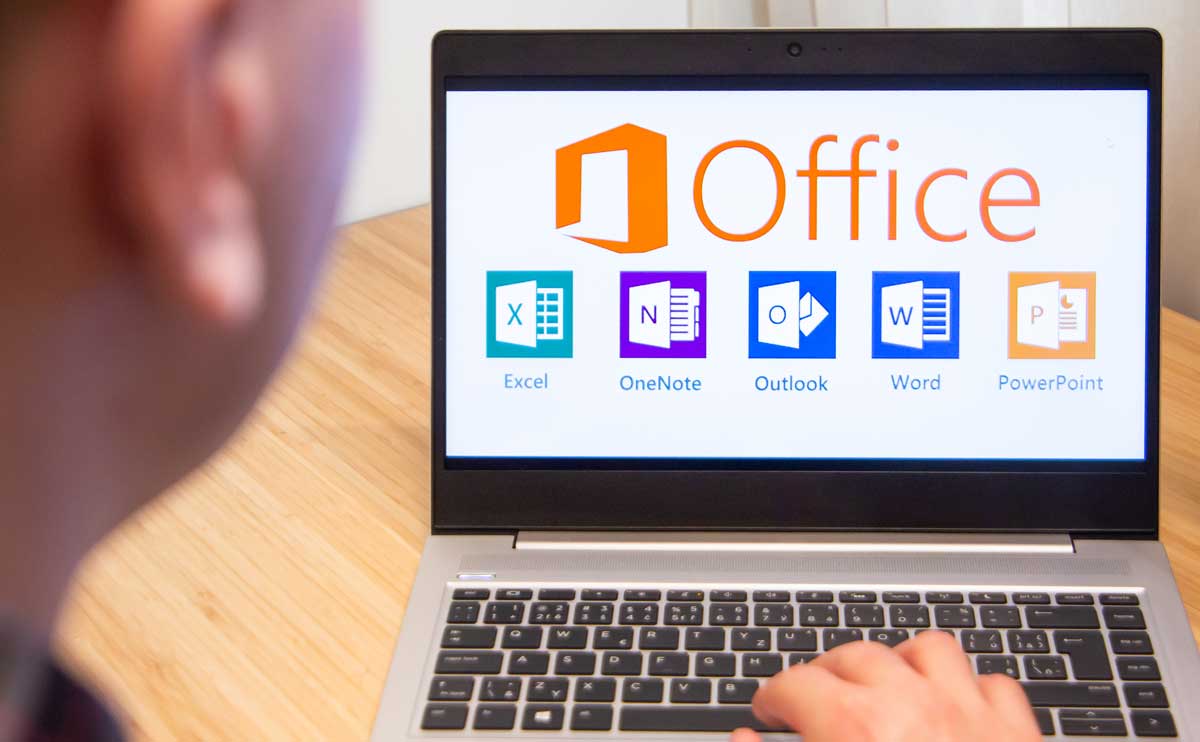When you purchase through links on our site, we may earn a commission. Here’s how it works.
| Best Quality | |
| Best Features | |
| Best Value |
|
| Compare All Products | |
By now, you’ve probably heard all the rage about 3D printers. You can print anything from a simple iPhone case to a complex, fully functional motor, or even an entire house! – all on demand.
In addition to the fun factor, there are plenty of businesses that utilize 3D printers. It appears that 3D printing has secured itself a slot in the future of manufacturing. Our experts take a look at the industry and review the top 3D printers on the market today.
What Is 3D Printing?
3D printing (or additive manufacturing “AM” for short) creates solid objects of virtually any shape using a digital “mold.” Printers use a Computer Aided Design (CAD) blueprint that slices into hundreds or thousands of layers. These layers are then “printed” (or added on top of each other) one at a time to create a 3D object. The print material can range from plastic resins to metals or even chocolate.
What Are The Best 3D Printers?
In the past, 3D printers were extremely large and very expensive. Lucky for you, the technology has improved enough recently to make home three-dimensional “desktop” printing a reality.
As with traditional 2D printers, 3D printers are known to jam and give you a bit of trouble from time to time. But not to worry! The brands we reviewed below are all backed with warranties and a team of experts who are there to help you.
We also might note that many of the printers require you to use their own filament (i.e. “ink”), so keep that in mind when making a decision.
Instead of general winners, we have selected a winner in their respective categories:
Best Quality: Ultimaker S5
If you’re looking for one of the most basic desktop 3D printers, look no further than the Ultimaker S5. We read mostly glowing reviews about how well this machine produces high quality products, and with the fastest output on the market.
There are three different models of the Ultimaker: the extended version for large format printing, the less expensive and smaller 2 GO less, and our recommended Utlimaker S5. All three are relatively light weight and durable machines. They take both SD and USB for input and have customer service to help with any issues. Each model comes with a one year guarantee.
If you’re looking for a basic, reliable printer (with out all the bells and whistles) this is a good bet.
Pros |
Cons |
|
|
Price: $6,950.00
Best Features: MakerBot Replicator+
MakerBot’s Replicator does exactly what the name says, and the added on-board camera allows you to monitor printing from your smartphone or computer. It also has a mobile app which shows you time remaining on your print job, provides alerts and more. The Makerbot also has WiFi capability, which allows you to print wirelessly from the cloud.
In addition to the original version, there is a MakerBot x2 and a Mini, but if you’re just starting out, we recommend the original; you can always upgrade or get a mini down the road. Some users complain about the earlier model’s extruders getting jammed or parts being broken, but the latest 5th Generation printer should take care of most of the kinks.
If you are a more experienced techy looking to impress your friends, the Replicator is a great pick for you.
Pros |
Cons |
|
|
Price: $2,599.99
Best For Budget: xyzPrinting Da Vinci Evo
The XYZPrinting collection of 3D printers is quite impressive. They range from beginner level to plus and professional. While there is a big selection, it’s worth a little extra money to go with their newest printer the 1.0 Pro.
Even though it’s on the high-end for XYZ, the price tag is still pretty affordable, so you’ll get many of the pro benefits without the added cost. The Pro is the only printer that comes with an optional laser engraver that lets you etch anything onto materials like leather or wood. This feature is unique and makes the 1.0 Pro stand out from the competition. You can print via wireless, and with the 1.0 Pro, use any type of material or filament, which will save you some money in the long run.
If you want the best affordable 3D printer that’s easy to use, the XYZ Da Vinci is a sure bet.
Pros |
Cons |
|
|
Price: Check Amazon for availability
3D Printers Comparison Chart
| Best Quality: Ultimaker 2 |
Best Features: MakerBot Replicator |
Best Value: XYZPrinting da Vinci |
CubePro Duo | Dremel Idea Builder | Zeus (AIO Robotics) | |
|---|---|---|---|---|---|---|
| Price (at time of writing) | Check Amazon for availability | Check Amazon for availability | Check Amazon for availability | Check Amazon for availability | Check Amazon for availability | |
| Filament Type | 2.85 mm | MakerBot PLA | Third-party 1.75mm | Nylon, ABS, PLA and Infinity Rinse-Away | 1.75 5mm PLA | Corn based PLA |
| Product Weight | 24.5 pounds | 35 pounds | 58.6 pounds | 90+ pounds | 32.9 pounds | 56.5 pounds |
| Max. Print Size (H x W x D) | 9″ x 8.8″ x 8″ | 9.9″ x 7.8″ x 5.9″ | 7.8″ x 7.8″ x 7.8″ | 11.2″ x 9.06″ x 10.6″ | 16.25″ x 13.5″ x 19.5″ | 5.7″ x 8″ x 6″ |
| Supported File Types | STL, OBJ, DAE, AMF | STL, OBJ, Thing, MakerBot | STL, XYZ | .cubepro | OBJ, STL | STL, Gcode |
| Input | SD Card, USB | Wifi, USB, Ethernet | Wifi, USB | Wireless, USB | SD Card (up to 35 GB) | Wifi, USB, Ethernet |
| Windows Supported | ||||||
| OSX Supported | ||||||
| Warranty | 1 year | 6 months | Limited 90 days | 90 days | 1 year limited | 12 Month Limited. 6 Month Wear & Tear |
History Of 3D Printing
Although the technology seems to be relatively new, the oldest AM dates back to the early 1980s when Hideo Kodama of Nagoya Municipal Industrial Research Institute developed two fabricating methods. But it wasn’t until Chuck Hull of 3D Systems Corporation created the stereolithography method that modern AM printing arose.
Video: 3D Printing – How Does It Work & What Can You Make?
This video shows how the process works and the cutting edge applications that are being developed with 3D printing technology. It is exciting to think about the possibilities of doctors being able to “print” organs or parts of organs to transplant into the human body rather than waiting on a long organ transplant list.
5 Benefits Of 3D Printing For Businesses
Obviously, it’s fun to think of all the cool things you can print using a 3D printer (especially when you can use chocolate instead of ink). But, in addition to impressing your friends, there are plenty of reasons to invest in a 3D printer for professional use.
- Custom Design and Tweak Prototypes – Speed up your product development timeline by doing your own custom design and new product research and development and save money on the costly overhead of having a third-party do it for you. You can experiment with shapes and sizes and test your product without waiting or spending thousands of dollars to outsource the manufacturing of the prototypes. Companies like Nike are bringing this technology in-house, and, as a result, they’re able to shorten the time from concept to market.
- Create One of a Kind Pieces – Industries like auto and parts manufacturers, the aerospace industry, and even NASA are now using 3D printers to make parts, and are finding that the parts are fairly substantial, and durable enough to withstand high heat and pressure.
- Print Small Jobs – When outsourcing a product, the molds take time and money to build, and suppliers require a minimum purchase order size to make the product cost-effective. Not so with 3D printers. You can print your own prototype one-offs with the push of a button.
- Print on Demand, Anytime – For example, Yahoo has made it possible for blind children in Japan to search the web. Their Hands On Search machine is part 3D printer and part computer. Students at the Special Needs Education School can say something like “snowflake” and the machine will search Yahoo for an image and print a miniaturized version of the object on demand. In this case, it provides a physical object that the blind student can touch and feel to gain a better understanding of a word they do not know. The machine can literally print the answer to their question.
- Offer as a Capability for Potential Clients – Offering prototypes or models to clients could be especially beneficial for professionals in fields like architecture or engineering who want to impress their customers with three-dimensional renderings and samples.
What About Cube, Dremel, & Zeus?
In addition to the three “best of” printers reviewed above, here are three other great machines that we recommend depending on your budget and needs. These also have great reviews on third-party sites that we felt were worth mentioning.
Cube Pro | Dremel Idea Builder | Zeus by AIO Rebotics
Cube Pro Duo
This sleek printer makes a great addition to your office without being an eyesore. There are three models of the Cube Pro that are pretty similar in terms of features, except for the number of colors that can be printed. The Cube Pro does one color, Duo is two and Trio is (you guessed it) three colors.
However, the more colors you print the less space there is inside the chamber, so the more you compromise on the print area. For that reason we recommend the Duo as a happy medium.
All Cube Pros comes straight out of the box and print on a variety of material types and resolutions. You can use low resolution (similar to a regular printers “draft mode”) which will save on material. These printers also have a climate control to ensure quality printing, although some users report unreliable or fuzzy outputs at times. Finally, the smart cartridges that these printers use are easy to load (and must be purchased through the manufacturer since they’re made to fit this printer specifically).
Pros |
Cons |
|
|
Dremel Idea Builder
Dremel has been around for more than 80 years, so they’ve built a level of trust in the “imagination industry”. Their open system gives users the ability to download free, print-ready models from around the web, as well as hundreds of projects from their website. They have a huge knowledge base online including video tutorials, so you can start printing in no time. The options are as endless as your ideas.
One of the downsides is that you have to use the Dremel brand filament, since others could cause damage to the machine and will void the warranty. And a few people report that the printer is a little testy at times. but they have excellent customer service via Skype and chat to help you out.
Overall, it’s a decent product for a decent price tag, so if you’re not going to be using it heavily, it’s a great starter piece of equipment.
Pros |
Cons |
|
|
Price: Check Amazon for availability
Zeus 3-in-1 printer (by AIO Robotics)
AIO Robotics’ Zeus is a modern-day copy machine – it’s an all-in-one scanner, printer and designer that doesn’t require a computer or external equipment to print. It has a modern design and an easy to use 7 inch color touchscreen where you can edit and slice existing designs or search from thousands of free STL files on their online database.
They offer a number of support options including an on-board button which you can push to report issues/problems – you get a response back within 24 hours. The software automatically updates so there is no need to keep upgrading to newer models. And there are a number of added touches that make the printing seamless and effortless, like self-tests and auto-leveling.
This company was originally funded by a Kickstarter campaign, and, as a new, smaller start-up it might not have the history/reputation to back them up (although the founders are all industry veterans). Overall, it’s a solid machine that appeals to educators and students alike.
Pros |
Cons |
|
|
Price: Check Amazon for availability
What’s The Best Traditional Printer?
Now that you’ve seen the selection of printers and had a chance to compare them side by side, it’s time to decide which is the best fit for your needs.
If you are just starting out, you might want to start off to test the waters with a slightly less expensive version or one with great customer support. However, if you are a more experienced engineer and/or technically inclined, a printer with advanced features might be a better investment.
And if 3D printing isn’t your jam (get it?) then a more traditional printer might be more up your ally. Either way make sure your equipment is protected with a surge protector.
What will you make with a 3D printer? Let us know in the comments!
Tagged With: Comparison









